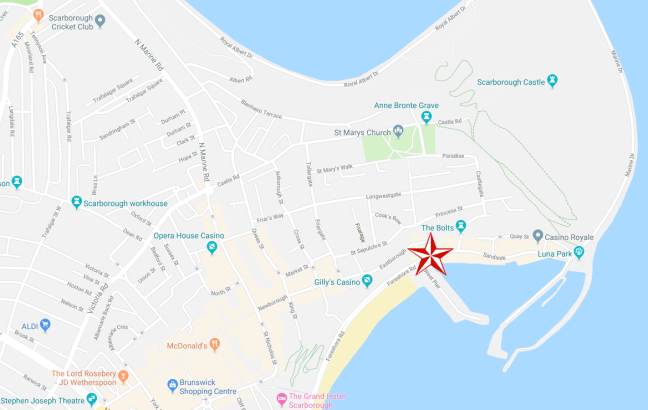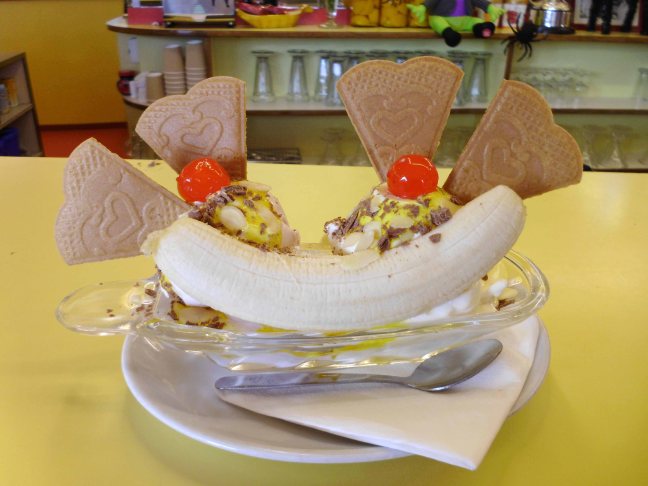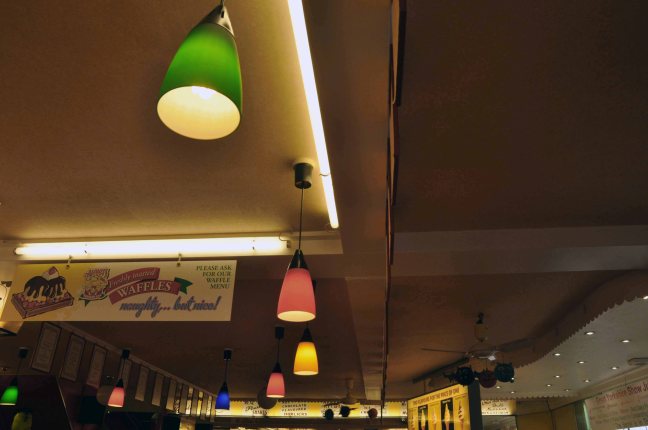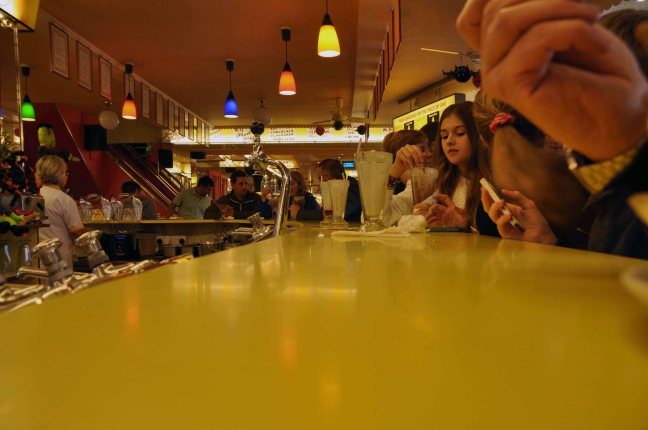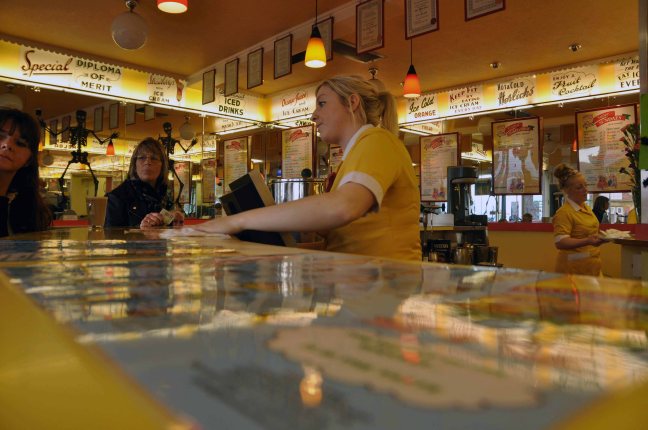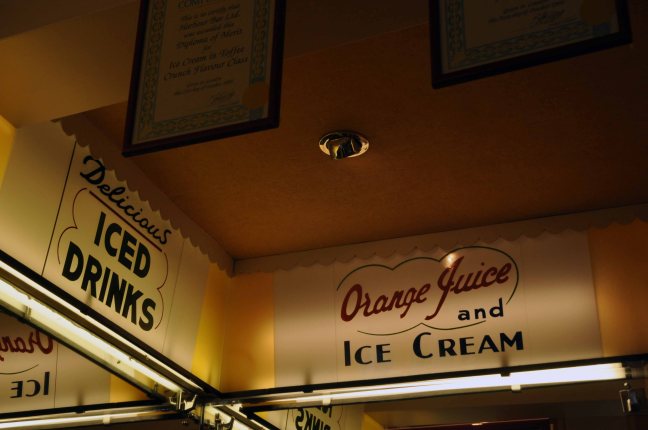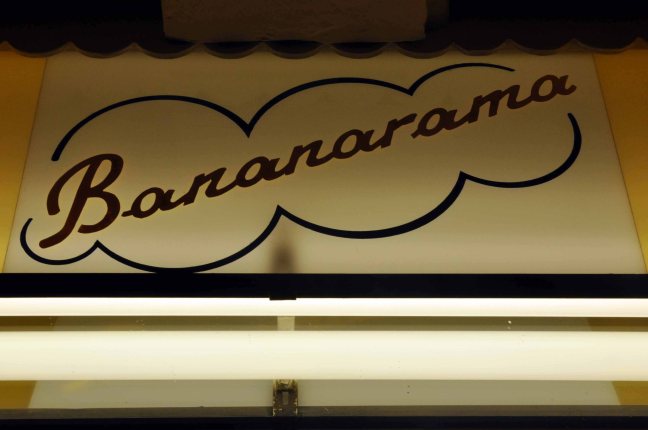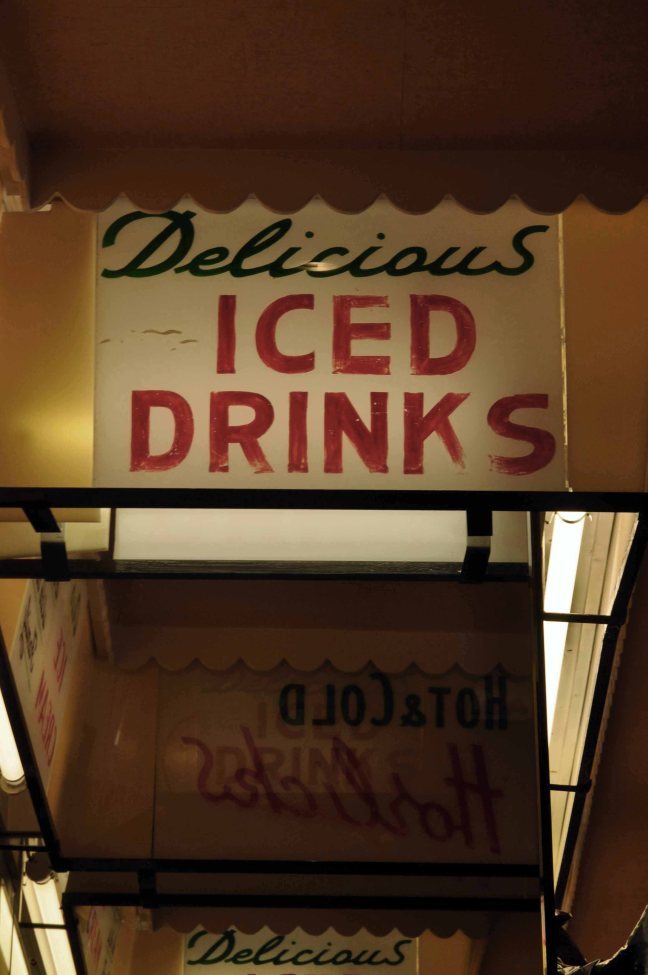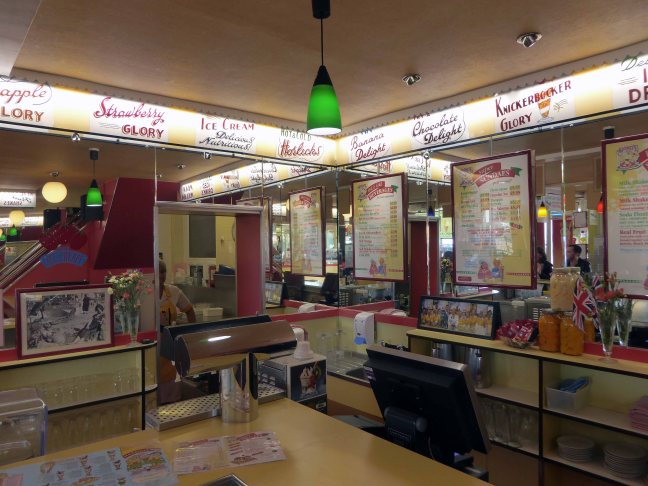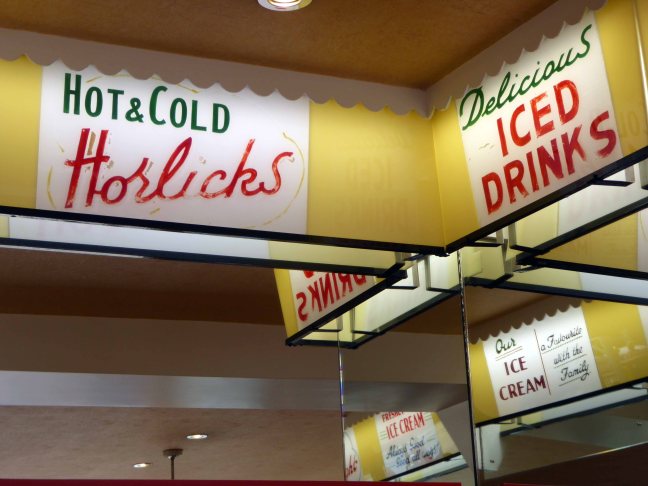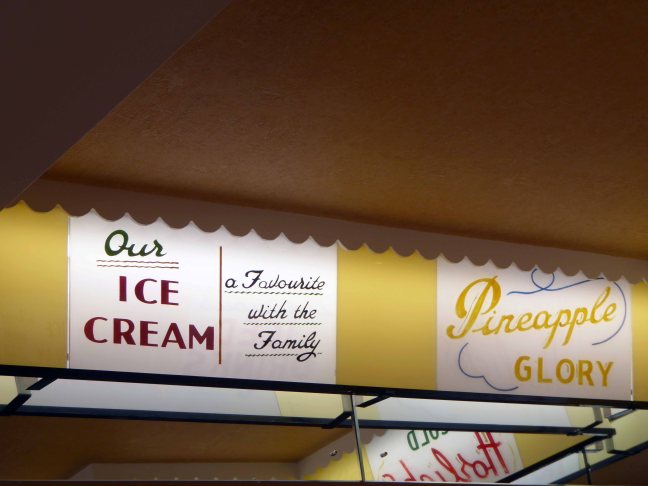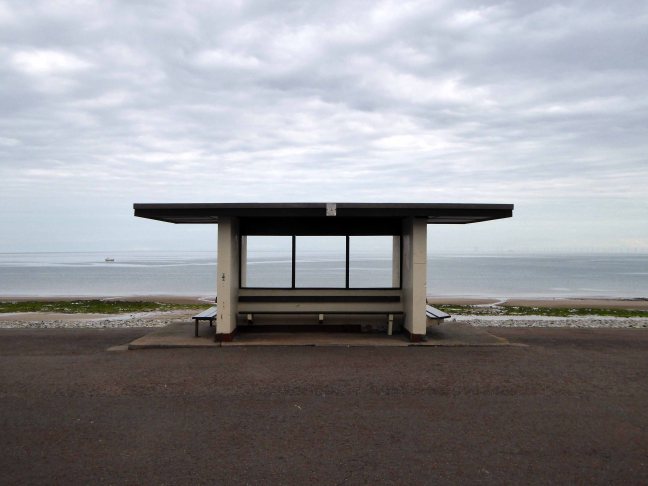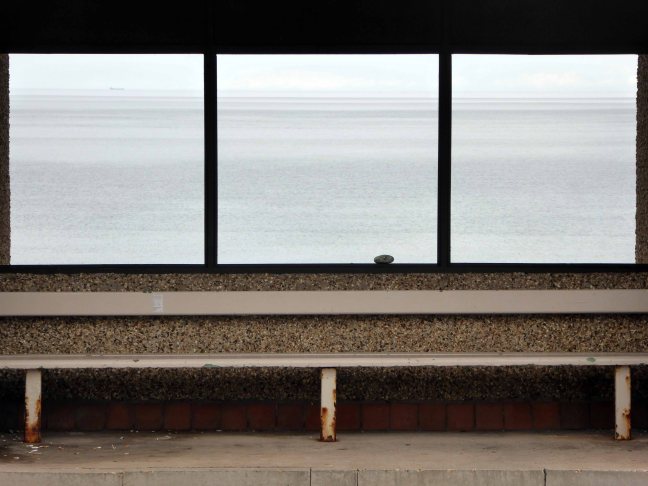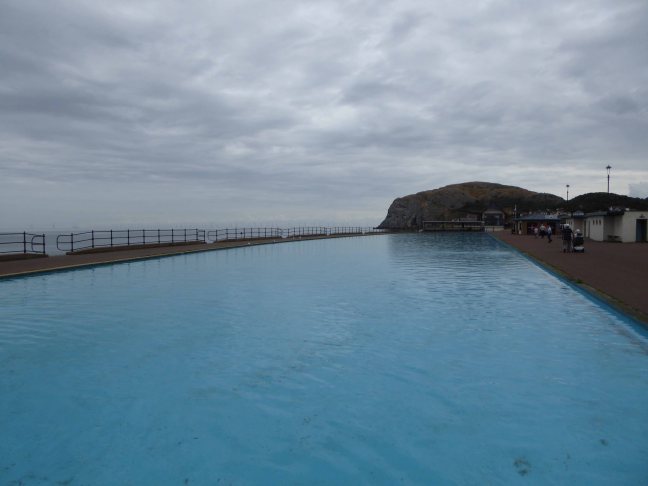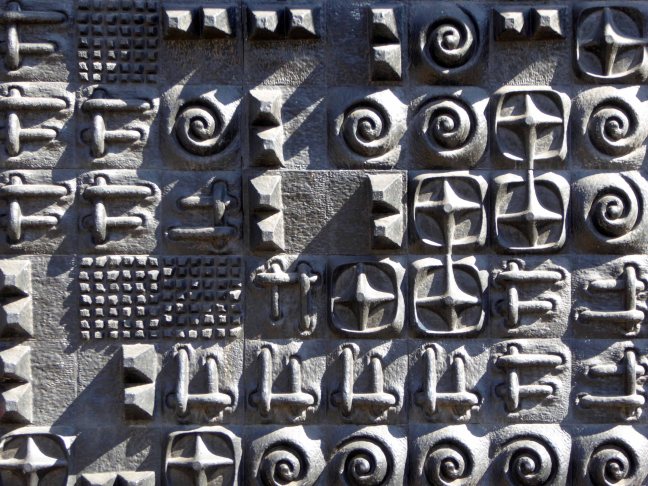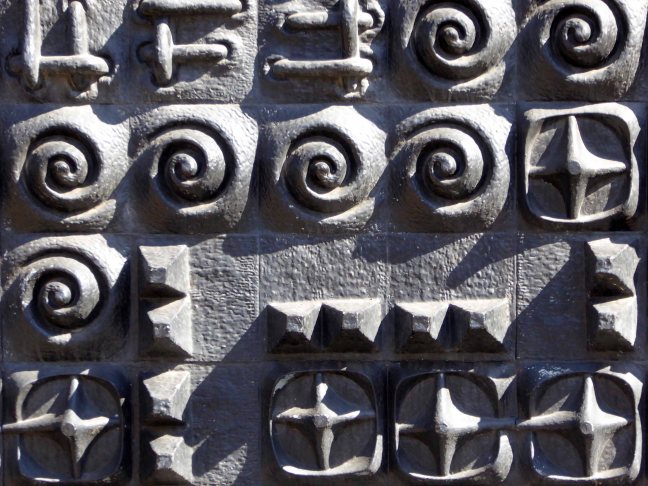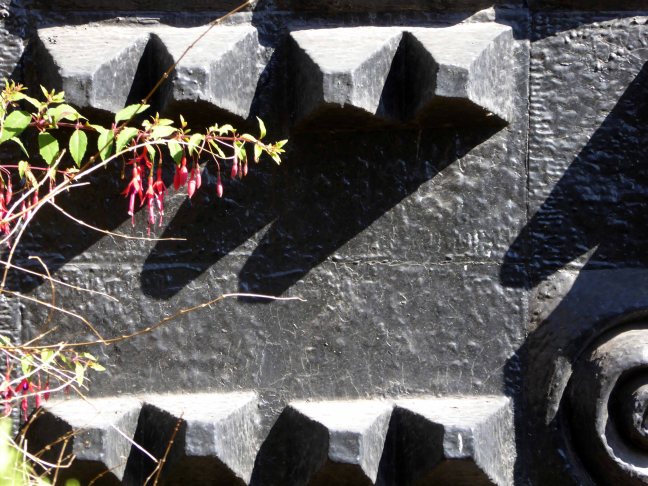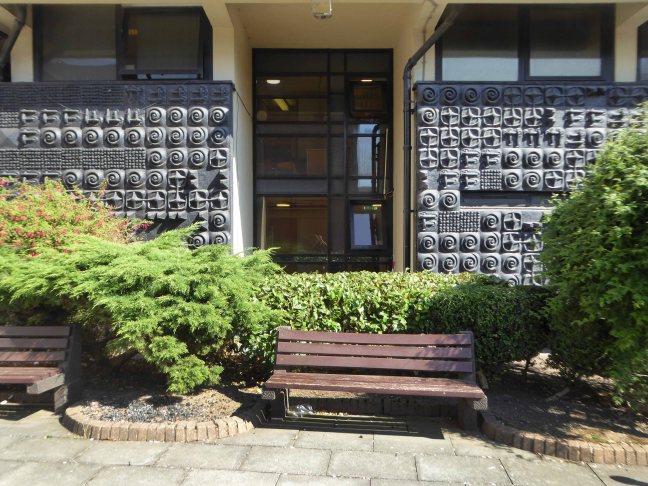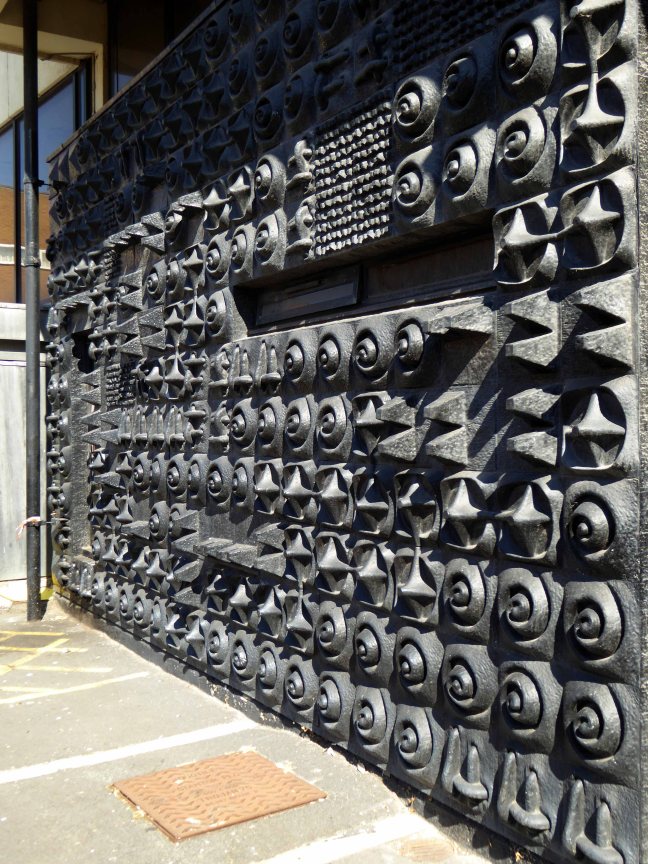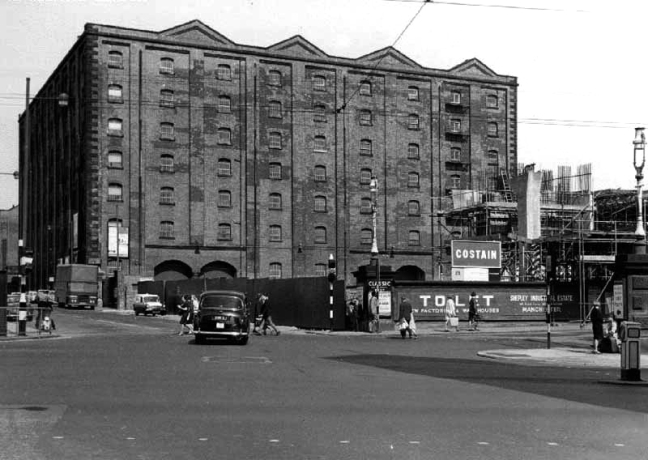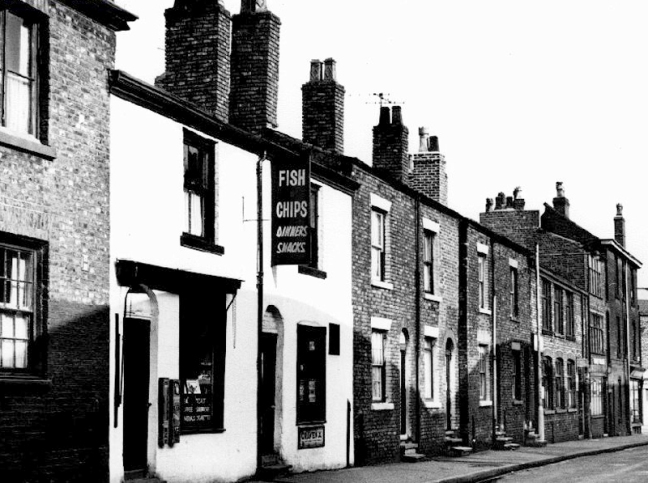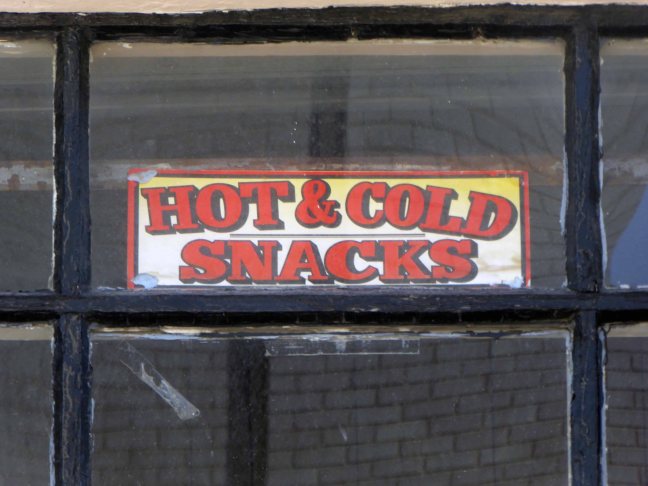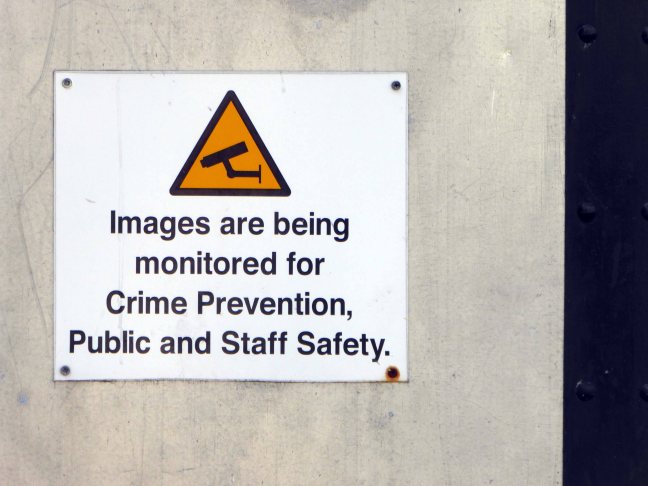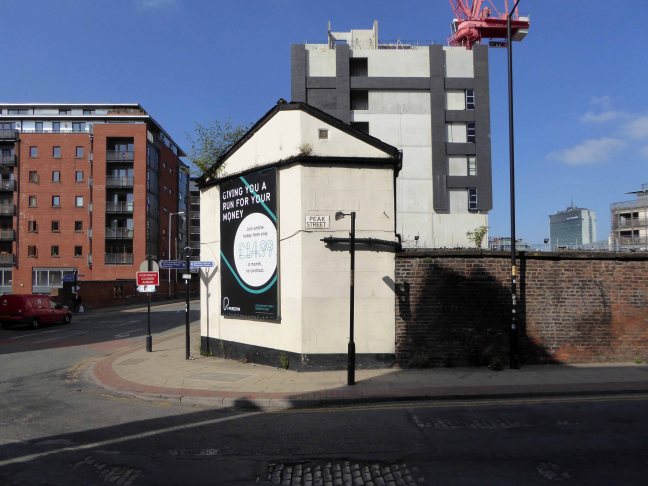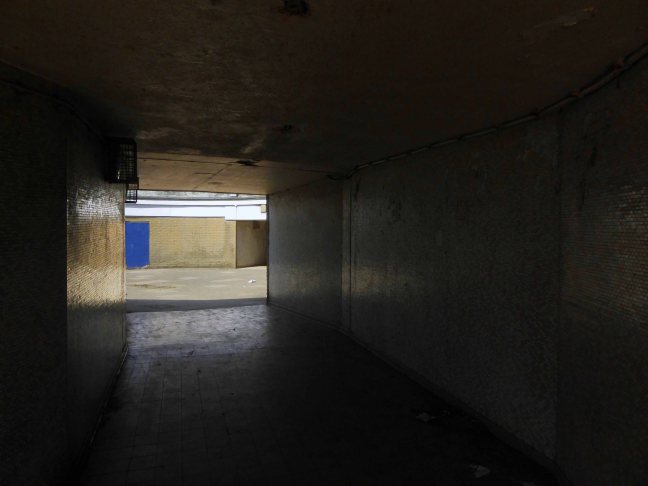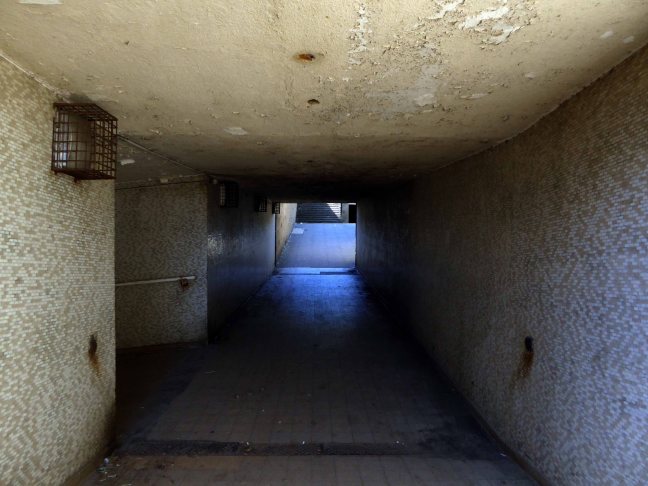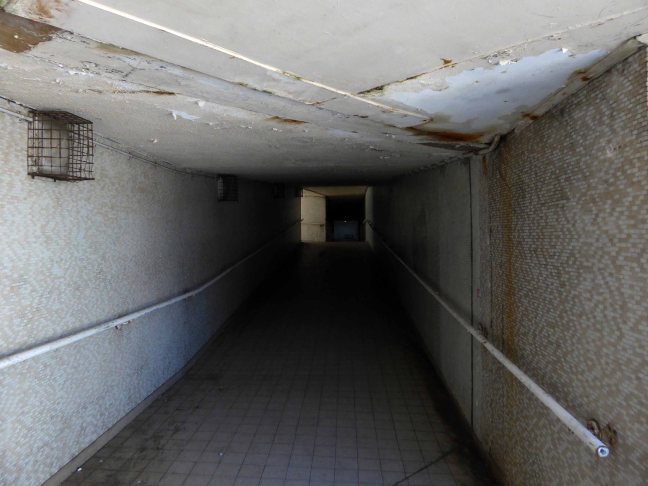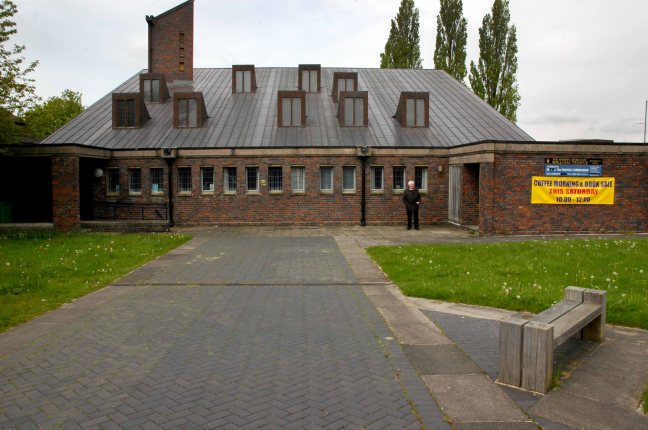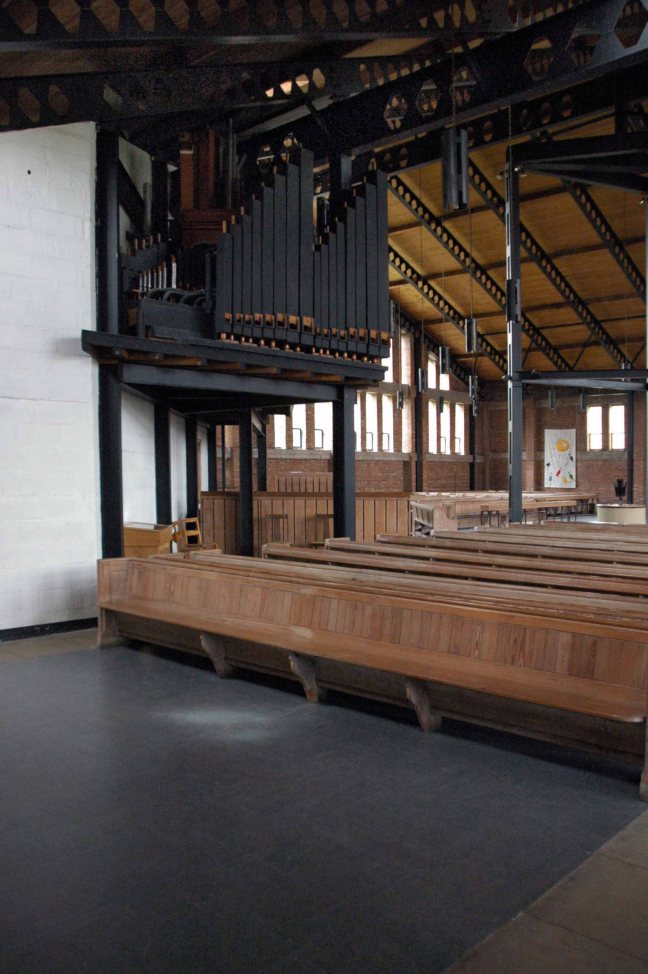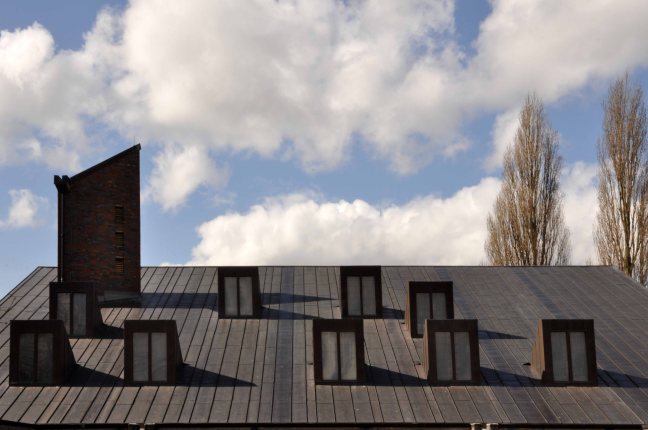
All Saints & Martyrs Rectory, Wood St, Middleton, Manchester M24 5GL
We had the pleasure to visit All Saints & Martyrs on Saturday 7th July 2018 as part of an Art and Christianity – Manchester Modernists Society bus tour.
We could not have been made more welcome by The Reverend Canon Philip Miller – Vicar of Langley and his team, many thanks for their warm hospitality.
Set on the Langley Estate, one of many developed by Manchester Council as overspill social housing, the church serves a large community to the north of the city.
The architect was Albert Walker of Leach Rhodes Walker – this was the first church that they had built, having previously specialised in shopping precincts.
Leach, Rhodes and Walker had involved Geoffrey Clarke RA with their earlier new church building for All Saints, Barton Road, Stretford. (1957) here his contribution was chiefly a large stained glass window depicting the Trinity. LRW continued to collaborate with Clarke in their church projects, in the years following at Langley. In a letter to the church at the time he wrote: “Start saving now for a new West End Window – only £10 p.s.f – for the greatest window in the North…. I have just done some windows I’m rather pleased with..”
The church is an imposing angular structure, its height possibly determined by the treasure within – The Langley Cross.

Consecrated in 1964, All Saints and Martyrs is home to the Langley Cross. This unique structure, which adorns our east wall, is the work of internationally renowned artist, Geoffrey Clarke RA, who has won reputation by his contributions to Coventry Cathedral.
The sculpture itself is 37 feet high and about 20 feet wide at the extremities of the transverse shaft and made of cast aluminium metal.
This is work of national and international significance.


The church is lit from the west by a large yellow and white window, formed of French stained glass. Though seriously damaged over time, it has subsequently been repaired and forms an imposing counterpoint to the facing cross.
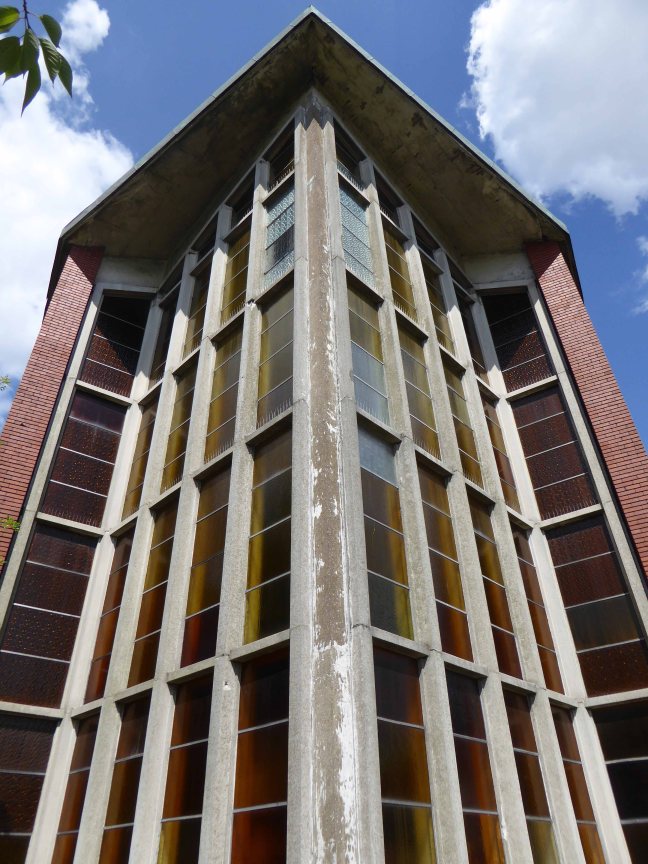

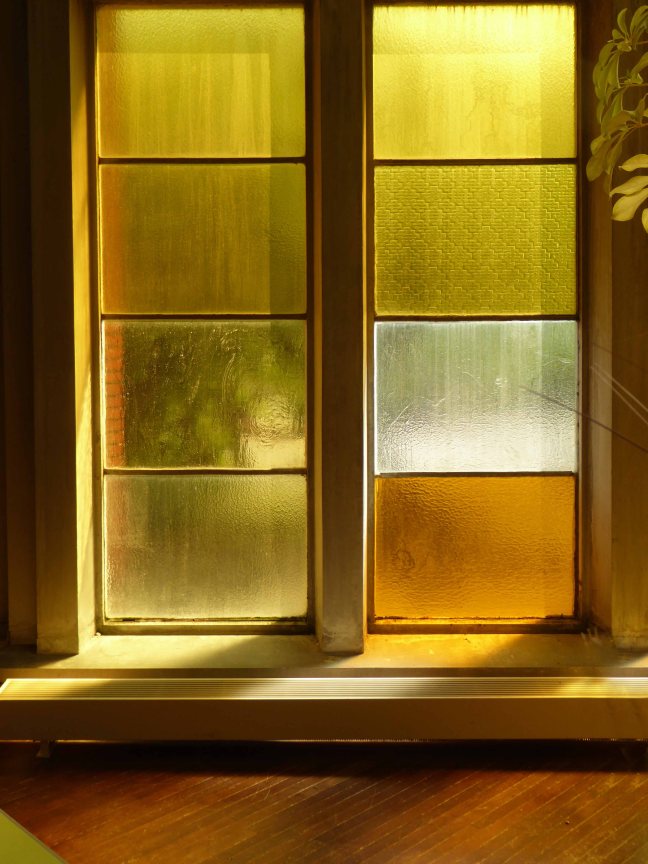

To the right of the main entrance is a delightful chapel, illuminated by a large stained glass window.

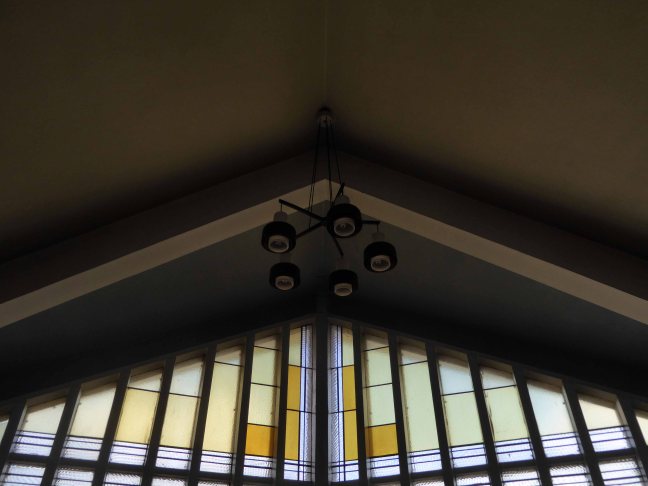
And in addition a charming period light fitting.

To the right of the altar and cross are pierced stained glass windows.

And to the left the sculptural organ pipes and further pierced stained glass.

The church has retained much of its original furnishings.

The roof is formed of intersecting concrete beams and coloured blocks.

The adjoining ground floor space was once used for an overflowing congregation, it has retrospectively been partitioned and serves as a social meeting area.
It was here that we were so generously treated to tea and cakes.
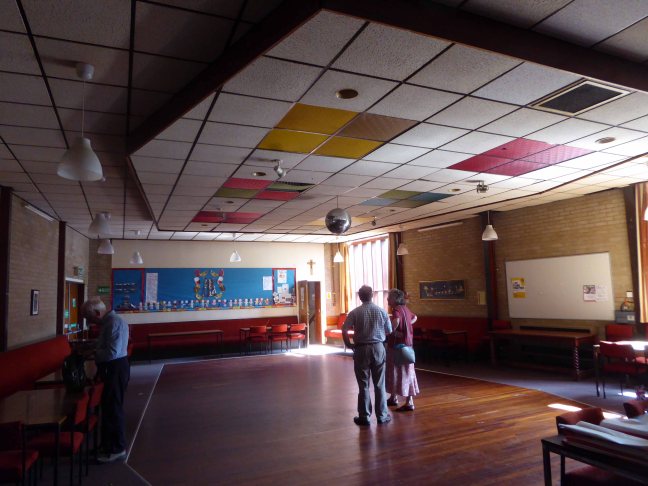
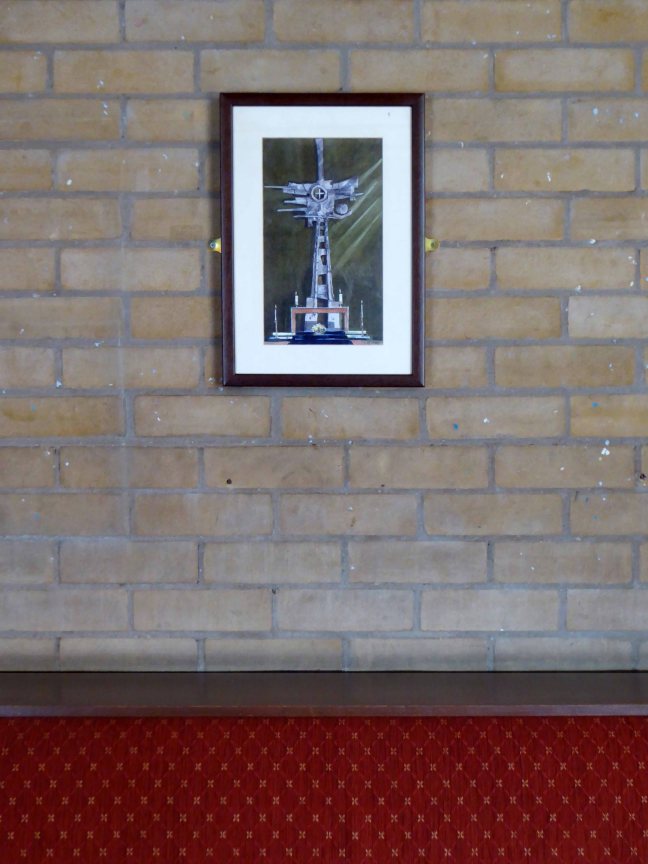
And given the opportunity to view examples from the church’s extensive archive.


The building is not without its problems – the ingress of water and the cost of maintaining the structure require outside assistance, through grant aiding, fund raising and donation. We should all make every effort to ensure that All Saints and Martyrs survives intact for generations to come.
Here is a building of great distinction, housing public art of the highest quality, built at a time when the ethos of nothing but the best for all was commonplace.
I can only thank Phil once again for his warm welcome and wish he and his parishioners – nothing but the best for the future!
If you have the opportunity, go and take a look for yourself.

